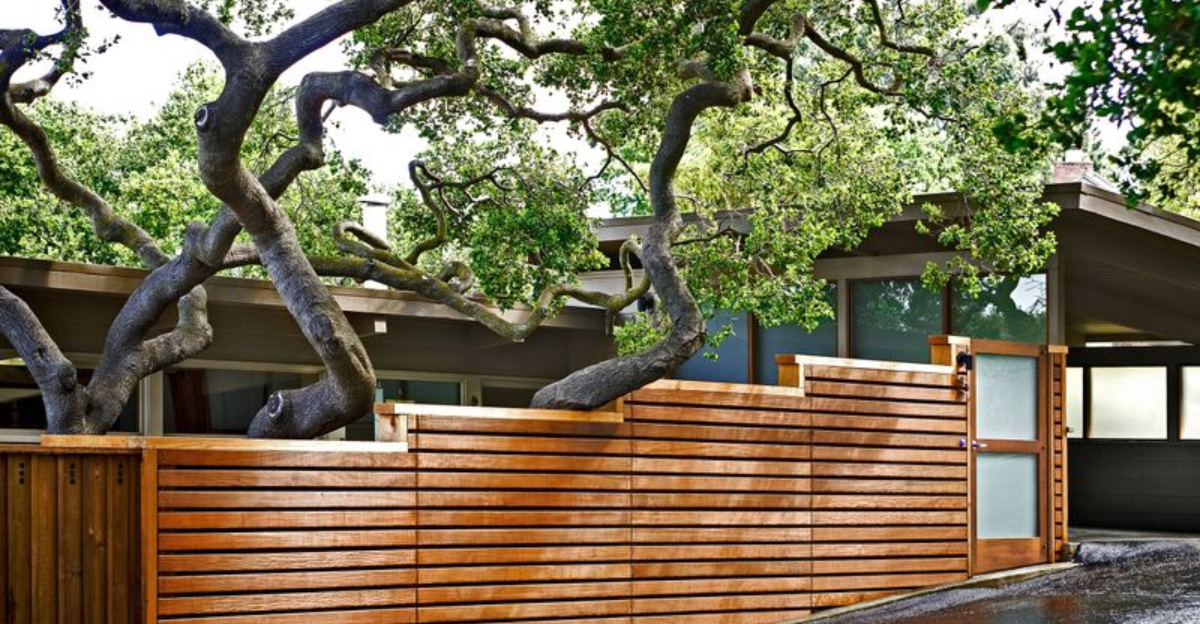Horizontal fencing whispers of quiet rebellion against the traditional picket lines that have defined American yards for generations. The clean, elongated planks create an optical illusion, stretching your space while cradling it in modern sophistication.
As shadows play between the boards throughout the day, these fences become living canvases – not just barriers, but architectural statements that frame your private Eden.
1. Floating Cedar Ribbons
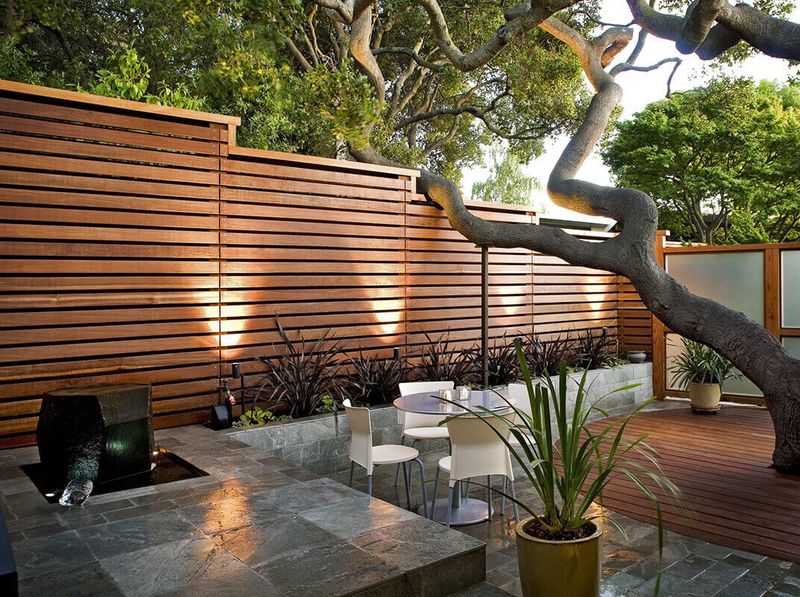
Suspended with slight gaps between each slat, these cedar planks appear to hover in space. Morning light filters through, casting ladder-like shadows across stone pathways.
The warm honey tones mature into silvery patina over seasons, telling time like a sundial. Natural oils in cedar resist insects and decay, making this beauty as practical as it is ethereal.
2. Midnight Stained Drama
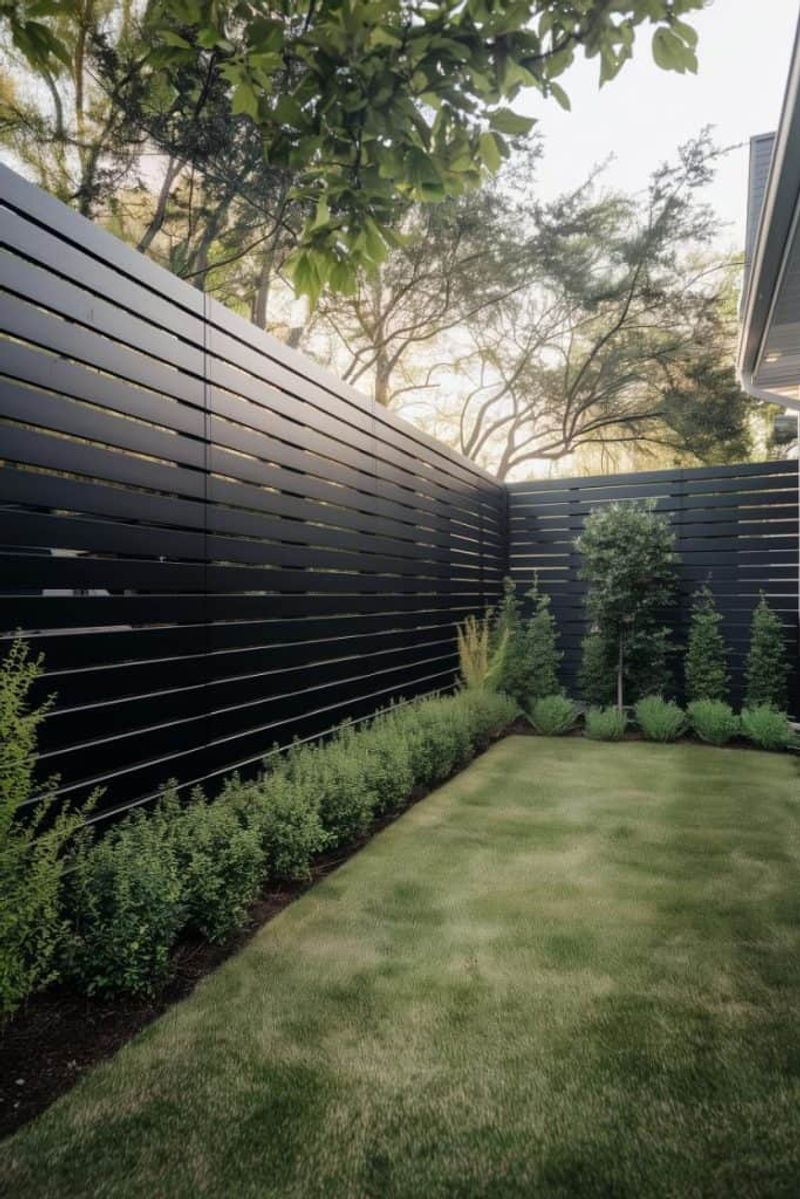
Black-stained pine creates a backdrop that makes greenery pop with theatrical intensity. The horizontal lines recede visually at dusk, letting garden colors take center stage.
During rainstorms, water beads dramatically on the sealed surface. Echoing Japanese shou sugi ban traditions—without the char—it captures the same depth and mystery, framing nature in shadowed elegance.
3. Staggered Depth Illusion

Boards installed at varying distances from the frame create a rippling, three-dimensional effect. Shadows deepen in the recesses while sunlight catches the forward planes.
The visual rhythm shifts throughout the day, echoing museum façades and bringing gallery-worthy design to daily life—all while keeping curious eyes out.
4. Weathered Silver Symphony
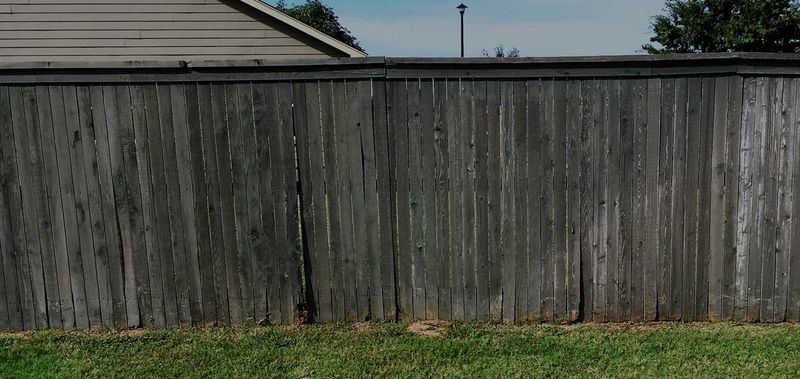
Reclaimed barnwood planks, stripped of old paint and arranged horizontally, tell stories through their patina. The silver-gray tones shimmer slightly in afternoon light, like a distant ocean horizon.
Birds often perch along the top edge at dawn. Each board bears witness to decades of weather, bringing historical depth to contemporary design while creating a sustainable boundary that honors both past and present.
5. Copper and Cedar Contrast
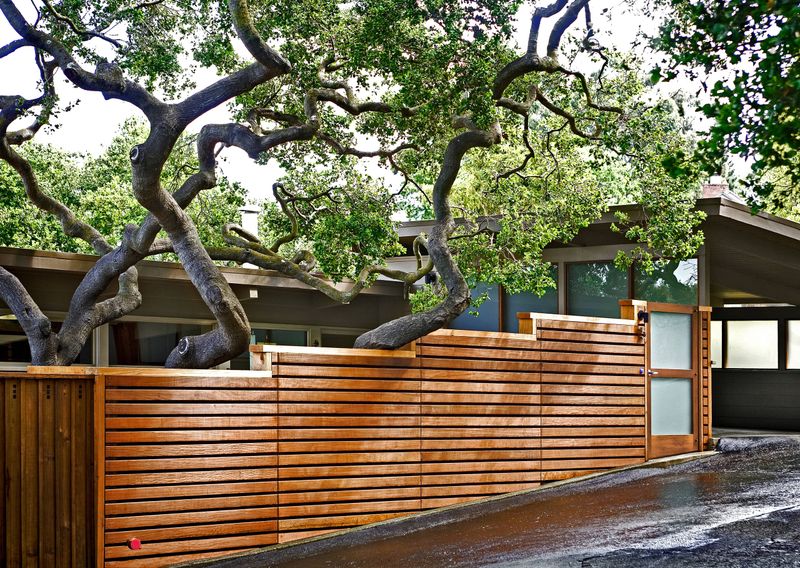
Thin copper strips inserted between cedar planks catch sunlight like lightning. As the copper develops verdigris patina, the fence evolves into a living artwork of complementary colors.
Rain leaves fleeting streaks of blue-green that fade and return—a timeline etched in material, marking seasons and embracing weather’s quiet artistry.
6. Concrete Base, Wooden Crown
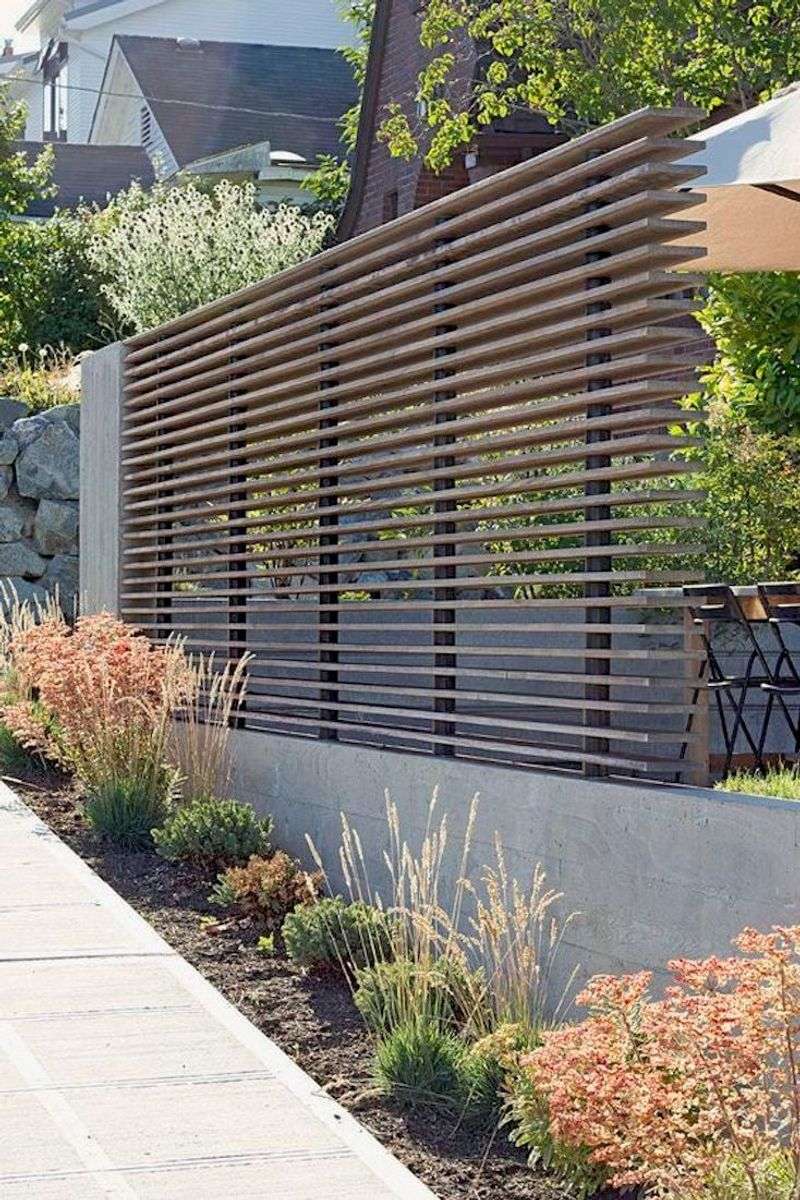
A poured concrete foundation rises two feet from the ground, topped with horizontal cedar planking. The material transition marks the boundary between earth and air, structure and breeze.
Concrete resists soil moisture and splashing rain, making it ideal for flood-prone or coastal areas. Brutalist sensibilities meet natural elements—practical poetry for tough terrain.
7. Gradient Stained Horizon
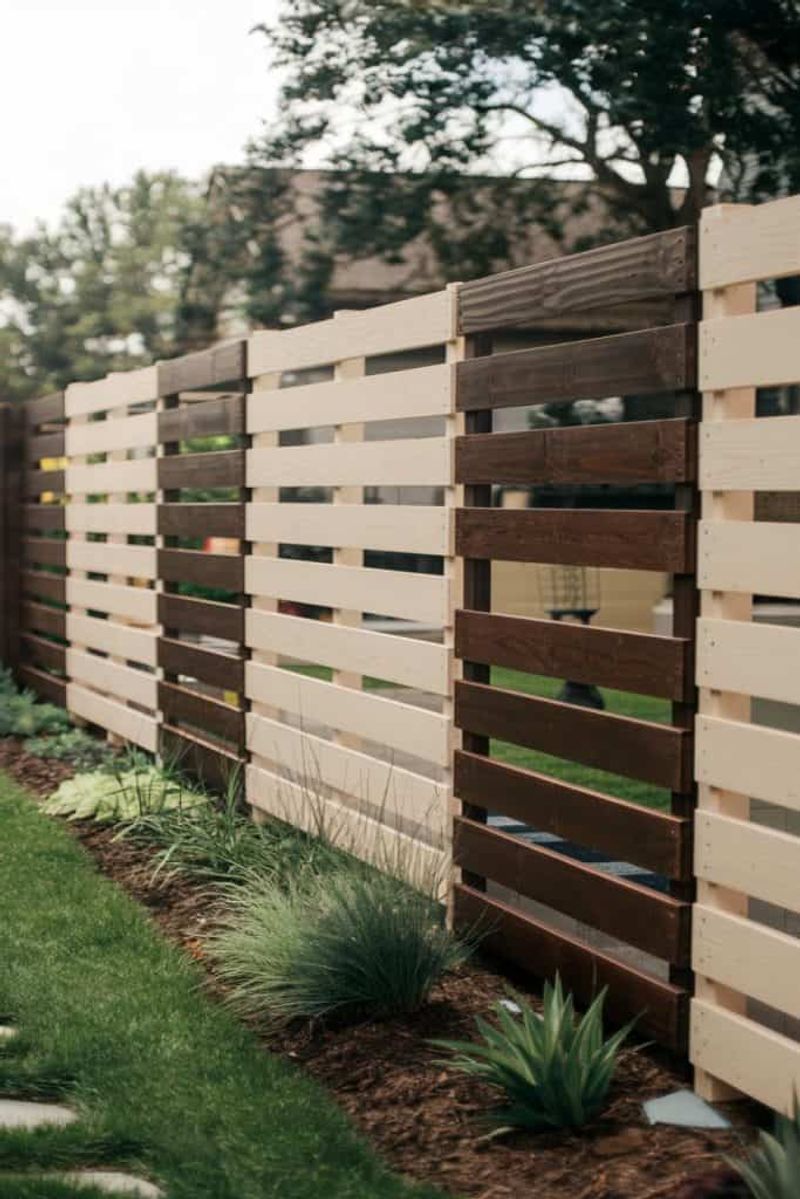
Boards stained in incrementally lighter shades create an ombré effect that mimics dawn breaking. The color transition draws the eye horizontally, making narrow spaces feel expansive.
Rooted in Scandinavian sauna design, the structure brings filtered intimacy outdoors, blending privacy with airflow and a gentle connection to nature.
8. Narrow Slat Rainscreen

Pencil-thin boards spaced half an inch apart create a semi-transparent boundary that filters views without blocking them entirely. Wind passes through with a gentle whistle on breezy days.
Inspired by Scandinavian sauna design, the structure offers filtered intimacy, maintaining airflow and a quiet connection to the surrounding landscape.
9. Living Green Integration
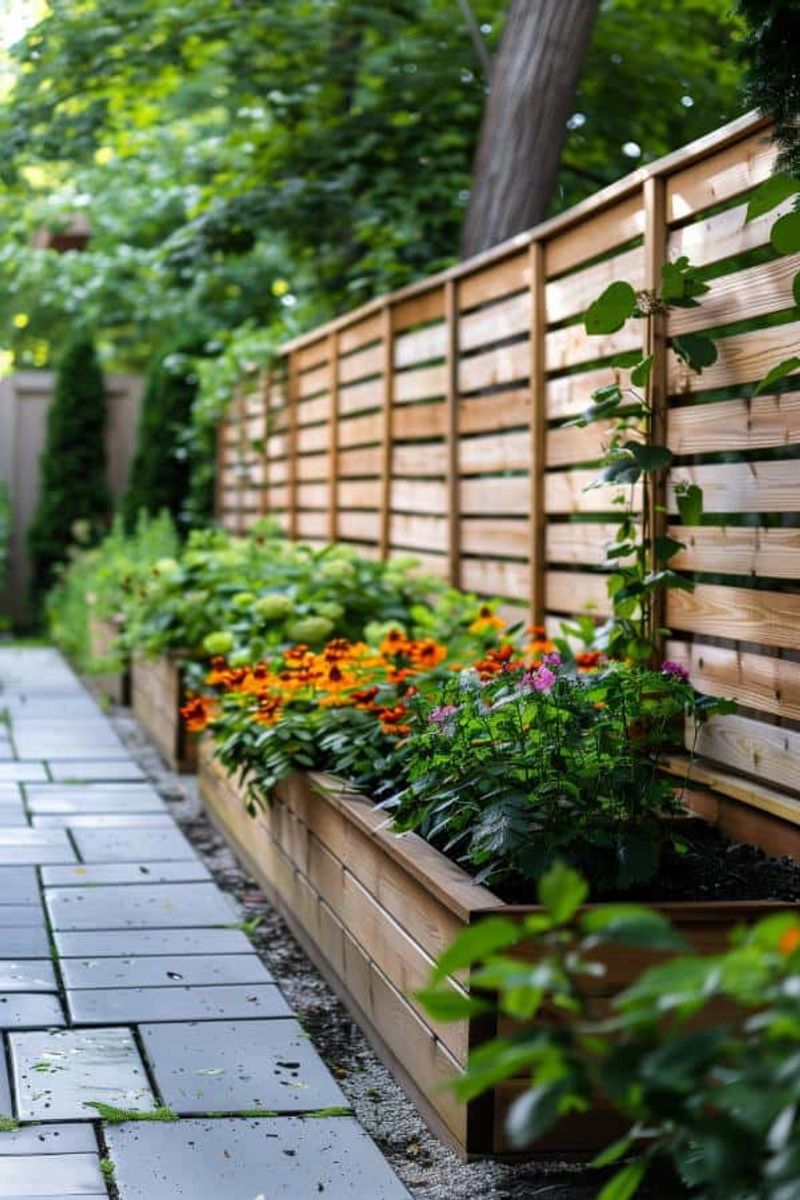
Horizontal cedar with strategically wider gaps between lower boards creates perfect planting pockets. Trailing vines and compact shrubs become part of the architecture rather than mere decoration.
The wood gradually disappears behind cascading greenery. This living fence changes with seasons – sparse in winter, revealing structural bones, then lush in summer when privacy matters most, bringing wildlife and movement to what would otherwise be static.
10. Alternating Width Pattern
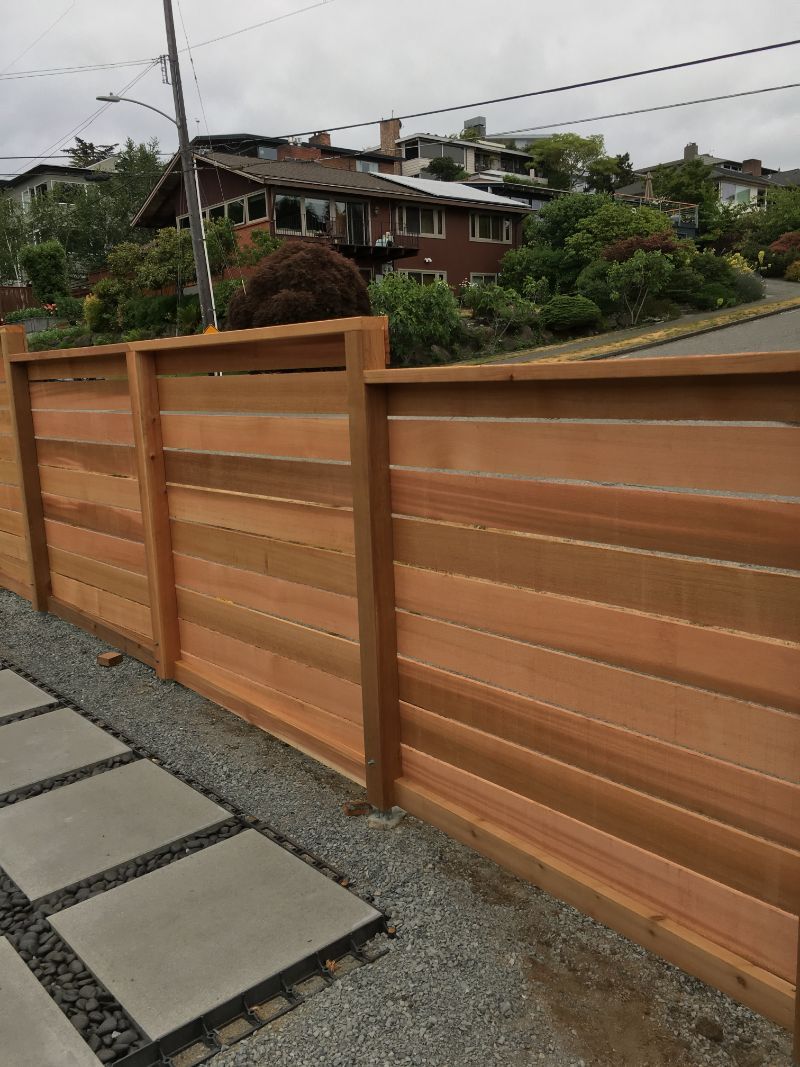
Wide boards paired with narrow strips create visual rhythm that breaks the monotony of standard fencing. Shadow lines double in complexity, turning simple barriers into textural art installations.
The pattern reads differently from various distances and angles and transforms utilitarian boundaries into composition, proving that even the most functional elements deserve thoughtful patterning.
11. Floating Frame Minimalism
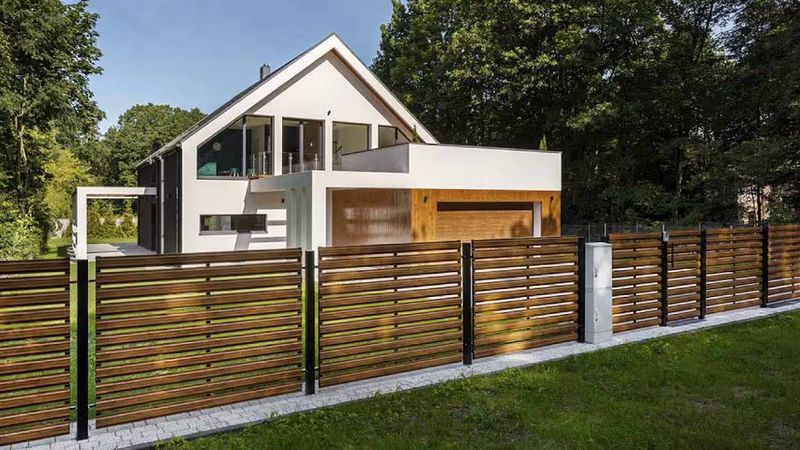
Horizontal boards contained within a black metal frame appear to float within their boundaries. The frame creates a gallery-like presentation of the wood’s natural grain patterns.
Negative space becomes as important as the material itself, drawing from Mondrian’s compositional theories to treat outdoor boundaries as deliberate art installations—bringing museum-quality design thinking to everyday landscapes.
12. Gabion Base, Wood Top
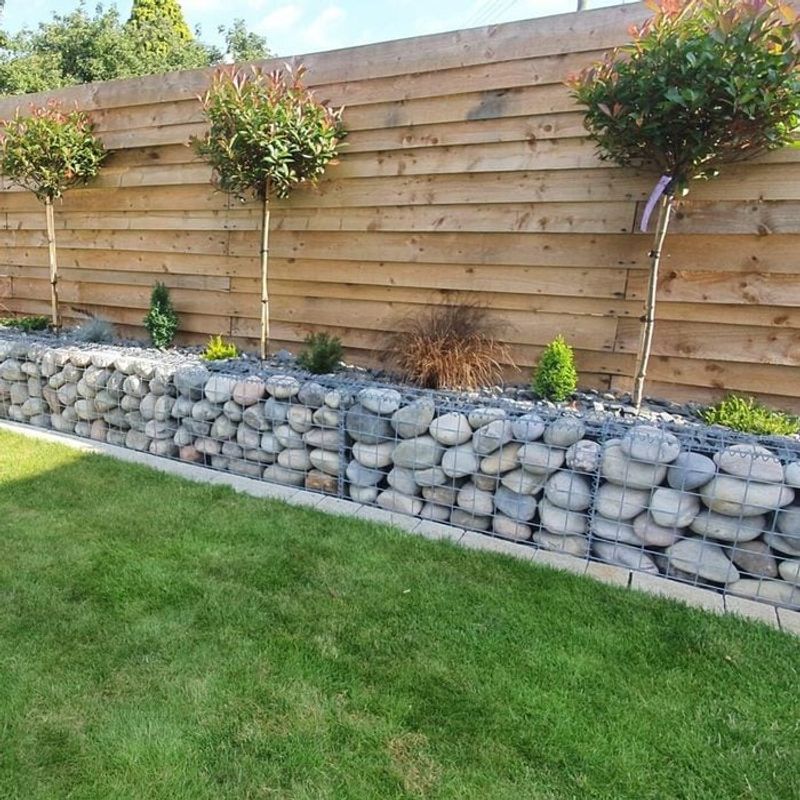
Wire cages filled with local stone create a sturdy foundation for sleek horizontal cedar planking above. The textural contrast between rough stone and smooth wood creates visual tension and interest.
Morning dew highlights the stone, afternoon sun warms the wood. Borrowing from civil engineering and sculpture, the design balances raw earth with refined carpentry, grounding modern aesthetics in geological permanence.
13. Chevron-Set Planking

Horizontal boards installed at slight angles create a subtle chevron pattern that catches light differently throughout the day. Morning sun highlights one direction while afternoon rays illuminate the opposite.
The dimensional quality adds unexpected shadow play. This fence design takes from parquet flooring traditions, elevating them to vertical art through light manipulation, proving that simple wood can become kinetic sculpture through thoughtful geometric arrangement.
14. Slatted Light Chamber
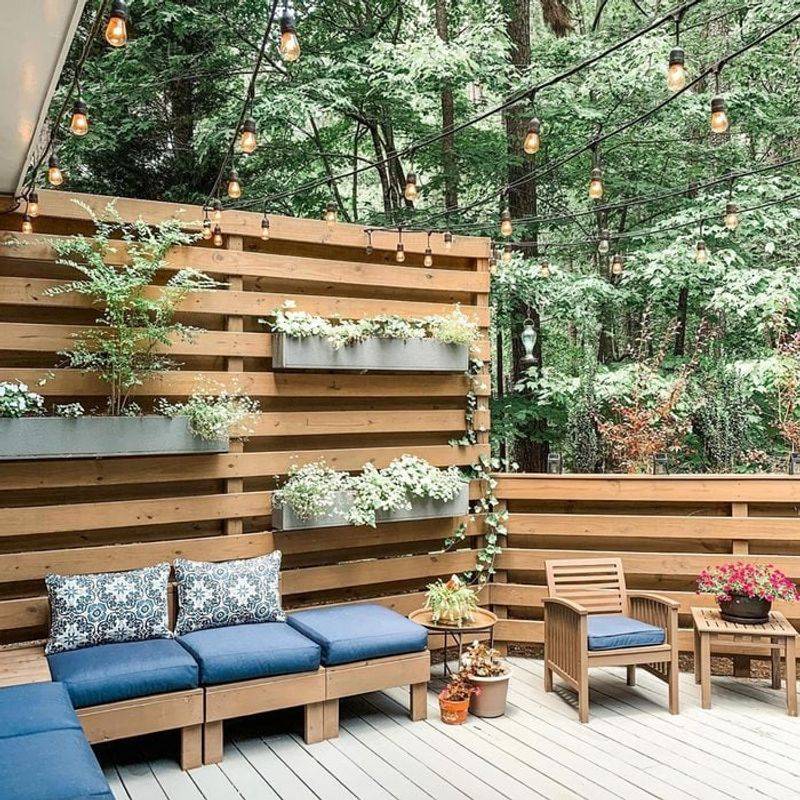
Two parallel horizontal fences set two feet apart create a corridor of filtered light. The double-layer system diffuses direct views while allowing air circulation between the structures.
Walking alongside feels like moving through a light installation. The slatted concept borrows from James Turrell’s perceptual art, transforming simple wood into a light-modulating membrane that changes throughout the day, providing both privacy and ever-shifting visual interest.
15. Charred Cedar Elegance
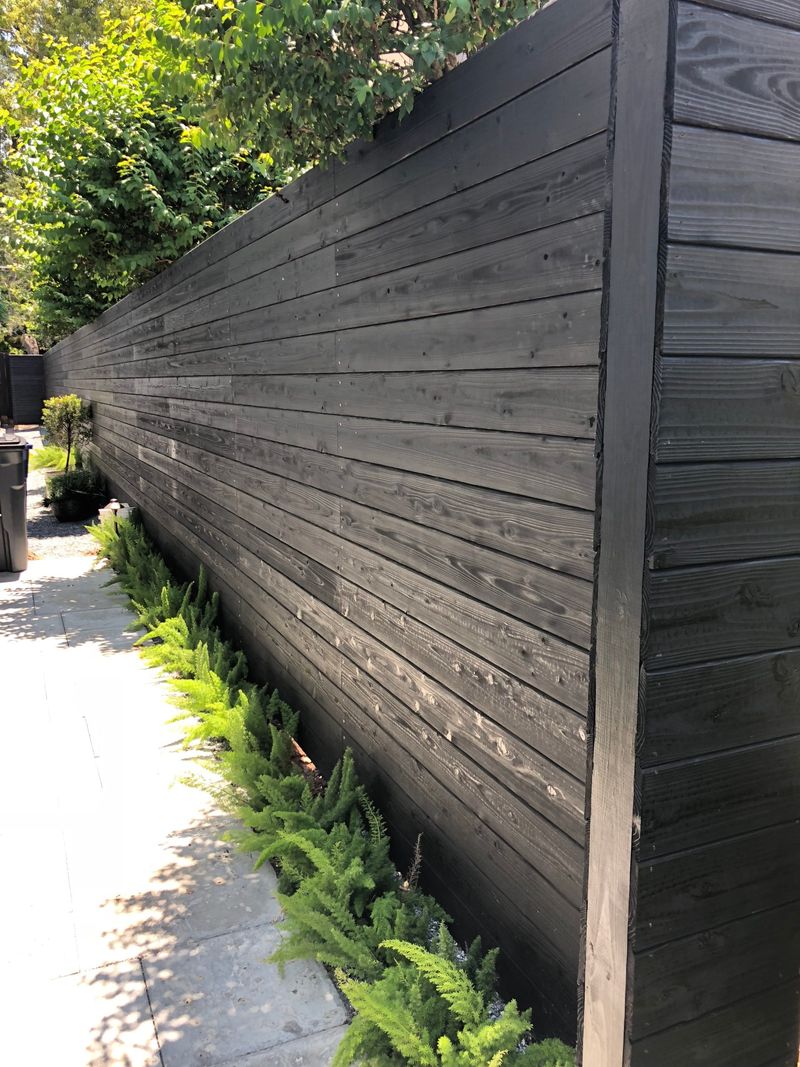
The ancient Japanese technique of shou sugi ban creates deeply textured, bug-resistant boards that absorb light rather than reflect it. The charcoal surface reveals subtle iridescence when wet from rain or morning dew.
Horizontal arrangement emphasizes the dramatic grain patterns. The solution transforms humble cedar into mysterious volcanic-looking material, bringing ancient craft traditions into contemporary landscape design while providing practical benefits of weather and pest resistance.
16. Corten Steel & Timber Duet
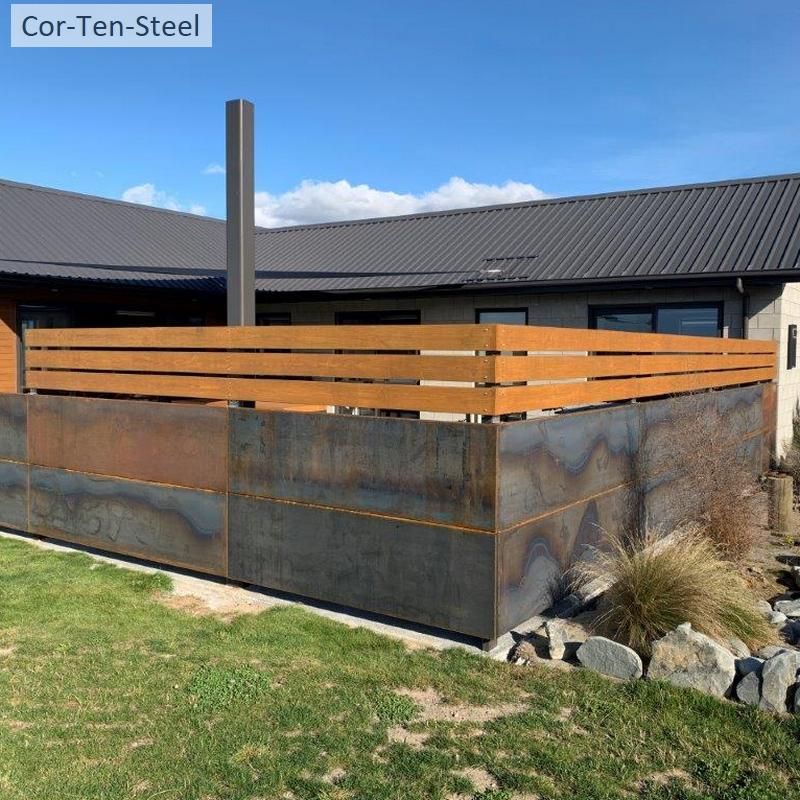
Alternating panels of rusted corten steel and warm cedar create a rhythmic boundary that honors both industrial and natural materials. The steel’s orange-red patina complements the wood’s amber tones in surprising harmony.
Rain streaks the metal with temporary darker patterns. This fence design bridges architectural modernism and organic warmth, proving that seemingly opposite materials can create unexpected poetry when arranged in horizontal dialogue across the landscape.
17. Whitewashed Coastal Horizon
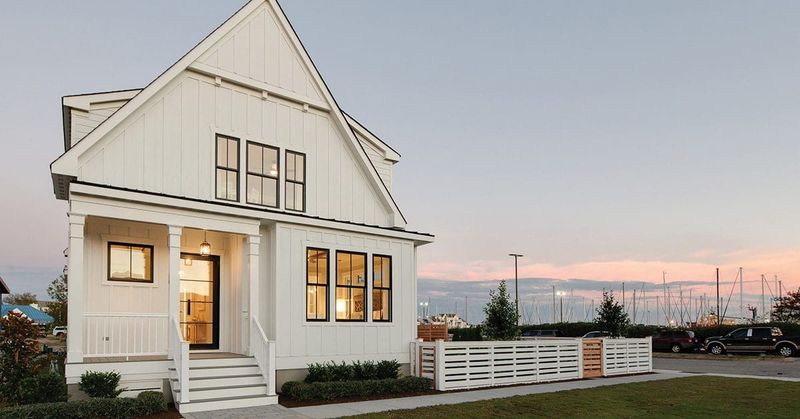
Pine boards painted with diluted white paint allow grain to show through like seafoam on sand. The horizontal lines echo distant ocean horizons, bringing maritime calm to inland spaces.
Shadows appear soft and diffused against the light surface. This style transforms practical privacy needs into atmospheric backdrop, borrowing from coastal cottage traditions while maintaining clean modern lines – nostalgia reimagined for contemporary outdoor living.
18. Louvered Privacy Control

Adjustable horizontal slats pivot to control visibility, airflow, and light penetration. Fully closed for privacy or angled open to catch breezes, this fence adapts to changing needs and weather.
This solution borrows from architectural window treatments, bringing their functionality outdoors and transforming static barriers into responsive environmental filters that participate actively in daily living.
19. Rope-Threaded Timber
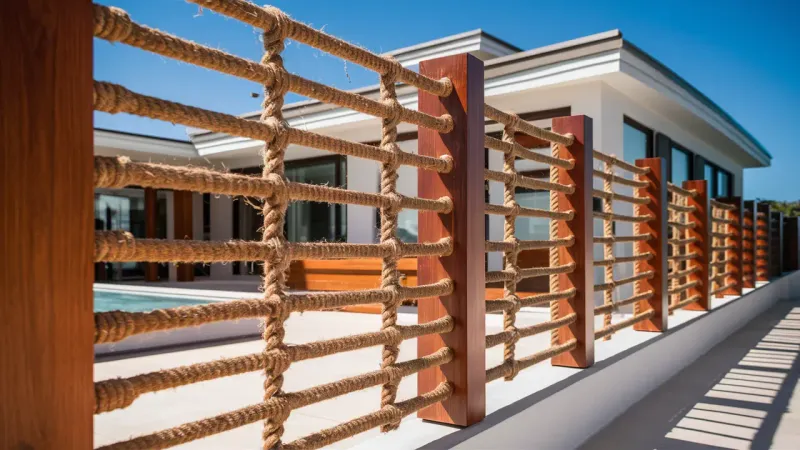
Nautical rope woven between horizontal boards creates a semi-transparent effect with maritime character. The rope sections flex slightly in strong winds, adding kinetic quality to an otherwise solid structure.
Sunlight filters through the fiber sections in golden streaks. A boundary design that blends carpentry and textile craft adds softness to rigid materials, shifting gently with weather while preserving privacy and form.
20. Backlit Evening Drama
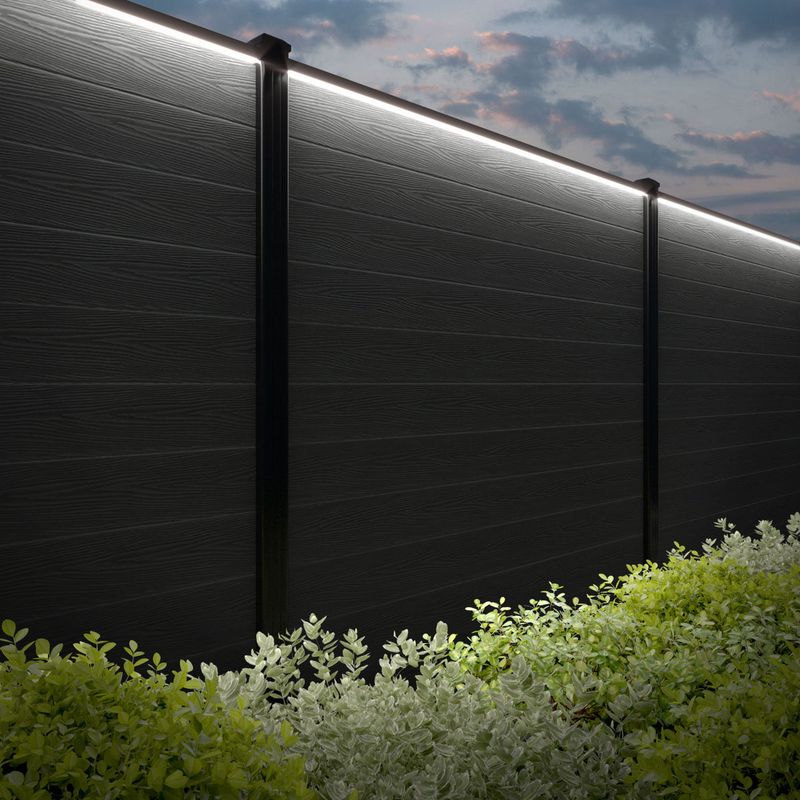
Integrated LED strips mounted behind horizontal boards transform the fence into a light sculpture after sunset. The glow outlines each board while washing the garden in soft illumination.
Stars seem to hover between the illuminated lines on clear nights. This concept elevates utilitarian structures to architectural lighting features, extending the usability and atmosphere of outdoor spaces well past sunset while creating theatrical backdrop for nighttime entertaining.

